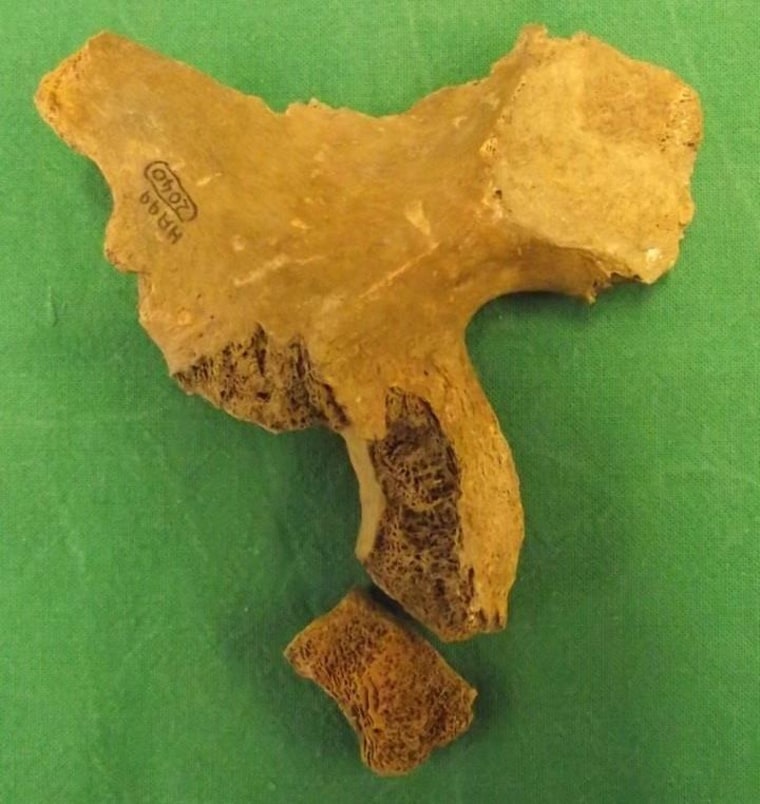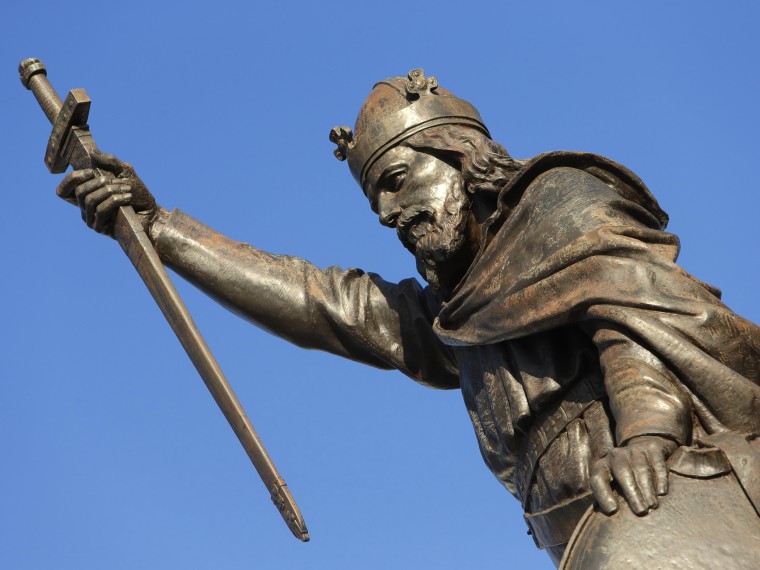WINCHESTER, England — Archaeologists say they might have found part of the remains of King Alfred the Great, a ninth-century monarch who was one of the best-known and most important figures of early English history.
Tests have shown that a pelvic bone found in a museum box is likely to have been either that of Alfred — the only English king to have the moniker "Great" — or his son King Edward the Elder.
The bone was found among remains dug up at a medieval abbey in the southwest English city of Winchester, the capital of Alfred's kingdom.
The remains were initially discovered in an excavation 15 years ago but were not tested at the time. Instead, they were stored in a box at Winchester Museum. Archaeologists took a second look at them after their failed bid to find traces of Alfred elsewhere.
"The bone is likely to be one of them, I wouldn't like to say which one," Kate Tucker, a researcher in human osteology from the University of Winchester, told reporters on Friday.
The discovery comes less than a year after British archaeologists discovered the missing bones of King Richard III, the last English king to die in battle in 1485, under a parking lot in the central English city of Leicester.
It was the worldwide interest in Richard's discovery last February that fueled the search for Alfred the Great. The king ruled the Anglo-Saxon kingdom of Wessex, an area that covered much of southern England, from 871 until his death in 899.
Famed for military victories against ferocious Vikings who had invaded much of the north of the country, Alfred was buried at the Anglo-Saxon cathedral in Winchester — but his remains and those of other royals were moved in 1100 by monks, ending up at the newly built Hyde Abbey.
The abbey was dissolved in 1536, and the whereabouts of Alfred's remains and those of other members of his royal family thereafter became unclear.
Bones thrown about
Prisoners building a jail on the site in 1788 are thought to have come across the royal coffins, pillaged them, emptied out the remains and thrown the bones about.
A month after the Richard III find, a local historical group called Hyde900 decided to exhume an unmarked grave at St. Bartholomew's Church. The church is located on the same site as the abbey, where a 19th-century antiquarian believed the bones had ended up. However, tests on the remains of six skeletons inside the grave revealed that they dated from a much later period.
Despite the disappointment, Tucker carried out further research and came upon promising remains at the museum. The remains had been discovered in a previous dig near the location of the high altar at Hyde Abbey between 1995 and 1999.
Tests concluded that the bone, amounting to about a third of a male pelvis, dated to between 895 and 1017 and belonged to a man aged between 26 and 45.
As there were no other burials at the site in the Anglo-Saxon period, archaeologists concluded that it had to belong to a member of the royal house of Wessex — and due to the age, it was most probably either Alfred or his son.
"Who else could it be," Tucker said.
'The Power Pelvis'
Rose Burns from Hyde900 said her group was thrilled by the discovery of what it called "the power pelvis" — although she admitted it was not as dramatic as the Richard III discovery.
"It was disappointing that the remains in the unmarked coffin weren't the full package," she told Reuters.

She said the find should pave the way for further exploration of the site and the prospect that more bones could be found.
DNA from Richard III's remains were matched with descendants, but Tucker said it might be hard to do the same with Alfred.
"We have had quite a number of individuals who have actually contacted us ... saying they are descendants of Alfred," Tucker said. "There's the potential that might be worth pursuing, but it is a very long way to try and go back. We're talking an extra 500 years further back than with Richard III."
British children know Alfred for a legendary story that, preoccupied with his kingdom's problems following a battle, he burnt some cakes he was supposed to be watching while being sheltered by a peasant woman. Unaware of his identity, the woman scolded him for his laziness.
However, more significantly, Alfred is regarded as laying the foundations for a unified England, and his passion for education and learning are seen a crucial in the development of the English language.
"King Alfred's significance in the history of this country cannot be underestimated," said Professor Joy Carter, vice-chancellor at the University of Winchester.
